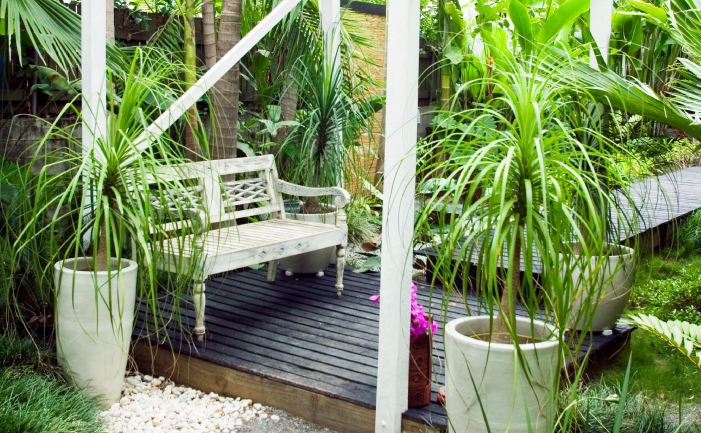
The decorative ponytail plant is native to dry, desert regions of Mexico and the southern United States.
Plant details
Common name: Ponytail palm, elephant’s foot tree
Botanic name: Beaucarnea recurvata (also known as Nolina recurvata and N. tuberculata)
Description: A slow growing, evergreen tree to about 9m (30′) tall. Its palm-like trunk has a massive, swollen base, which may reach 3 metres (10′) in diameter. The trunk tapers upward and then branches, with each branch supporting a dense crown of long, strappy leaves. Ponytails are dioecious, that is male and female reproductive parts are on separate plants. Masses of small white flowers are produced in summer, followed by spectacular stems of pinkish, 3-winged seeds on mature female plants.
Uses:
indoor, patio or balcony plant
feature or accent plant
succulent garden
novelty plant
Good points:
curious, swollen trunk
attractive foliage
brightly coloured seed heads
drought and heat tolerant
almost unkillable
Best climate: Grows well in many parts of Australia. Protect from frost in cooler zones.
Downside:
The swollen base of potted ponytails may crack their containers. (Tip: repot before this happens!) You will have to wait 10 years or more for your ponytail to flower and set seed. Female plants will only set seed if there is a male plant nearby.
Care:
Ponytails growing outdoors like full sun, good drainage and fertile soil. Potted indoor specimens need high light levels and a warm position. Water well during summer but sparingly during winter, otherwise the trunk may rot.
Getting started:
Ponytail plants are readily available at nurseries and garden centres. Plants in 175mm (7″) pots cost around $40.


